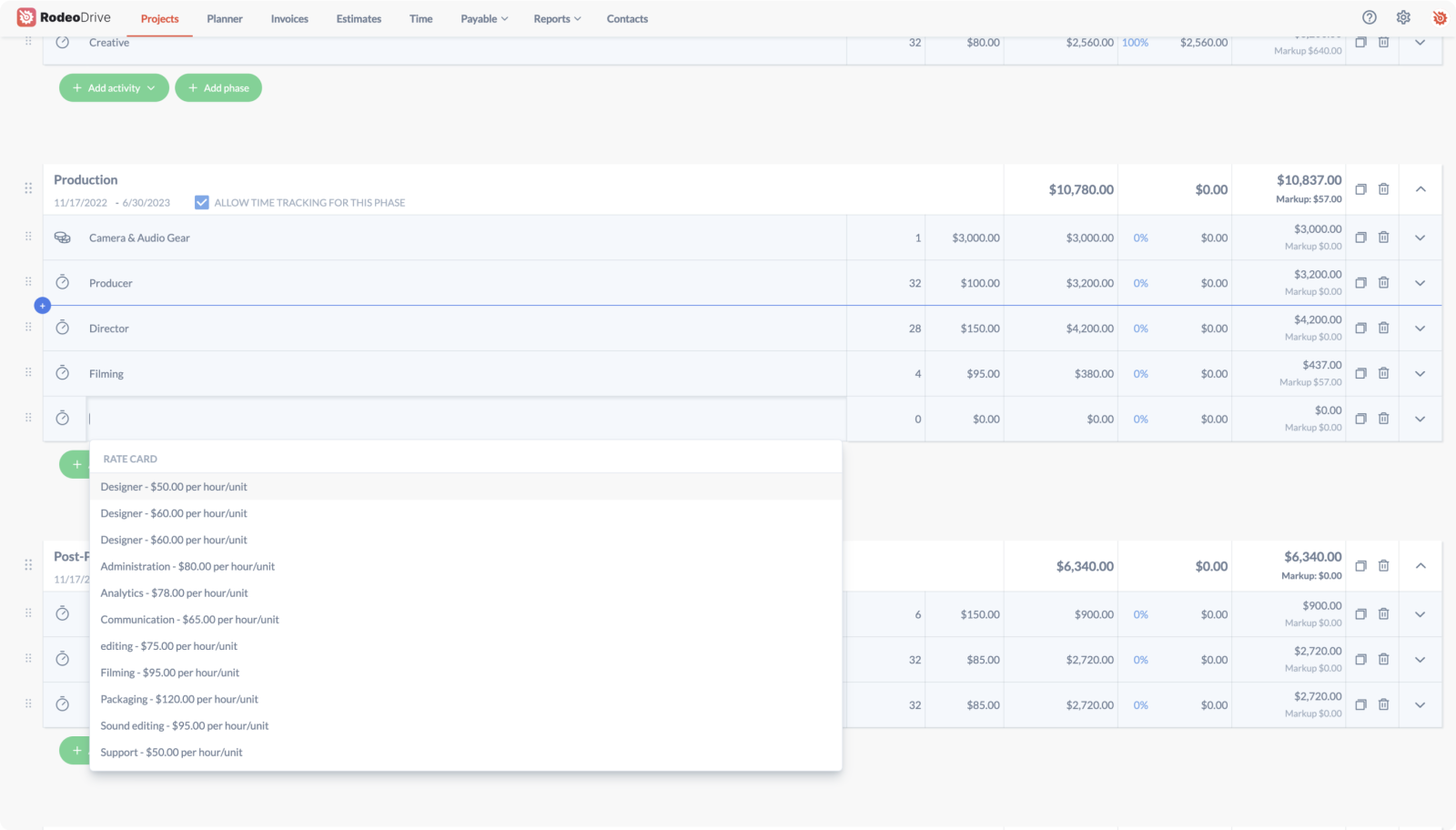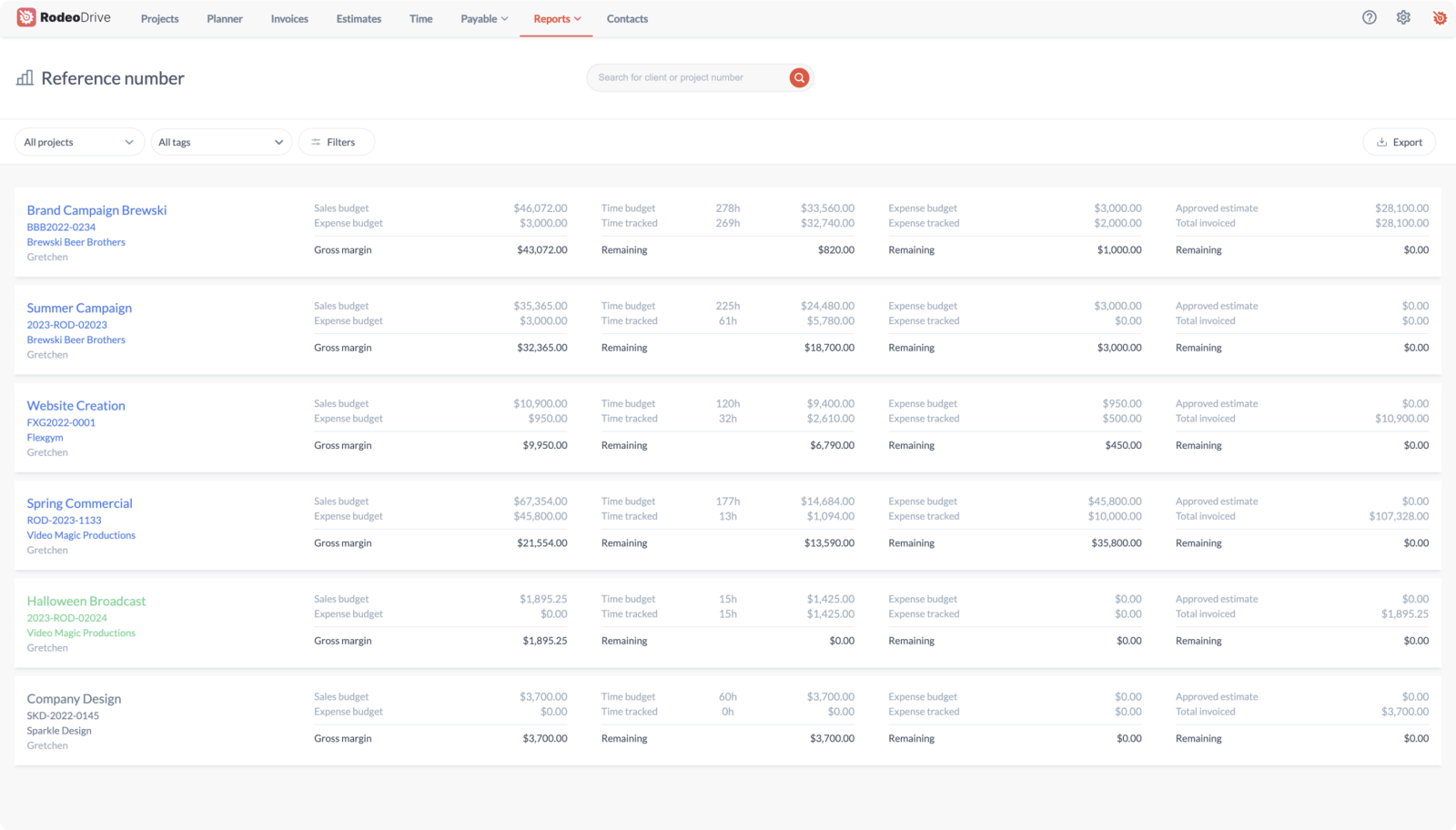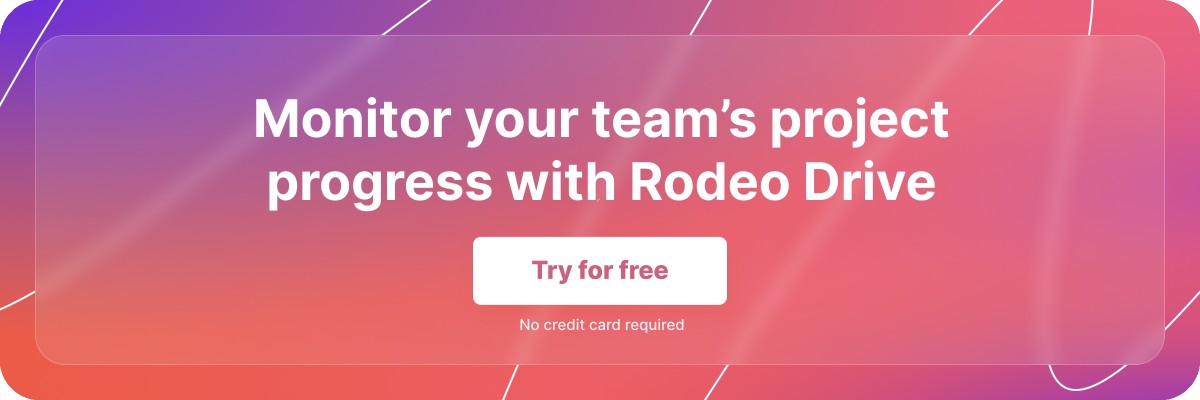Project Management Office: What It Is and Why It's Important
Organizations of all sizes utilize project management to help get their work done. But in larger organizations, having so many projects going on at once can harm your chances of successful project completion.
This is where a project management office (PMO) can be useful. As we’ll cover at length in this blog, a PMO is a department that helps enforce project management standards throughout the organization so that all projects are executed the same way for consistent results.
Keep reading to learn more about what PMOs do, the typical team roles, and some common challenges PMOs tend to face. Let’s get started!
What does PMO mean exactly?
A project management office (PMO) is a department within a larger organization that manages the company’s project management activities. The purpose of a PMO is to ensure that all projects the company works on are executed according to the same standards and practices.
The project management office is a department that operates between the executive-level management and the actual project team. As a result, they’re often tasked with facilitating communication between departments, along with several other responsibilities — which we’ll cover later on in this blog.
Implementing robust project governance through the PMO
Project governance is about making sure there's a clear framework in place. This framework guides how decisions are made, risks are managed, and project objectives are achieved.
Through the PMO, organizations establish a structured approach to project governance. This involves defining roles, responsibilities, and accountabilities. The PMO helps in setting these rules, ensuring that everyone understands their part in bringing a project to success.
In essence, the PMO's role in project governance is about setting up a framework that guides projects from start to finish. It ensures that projects not only align with organizational goals but also are executed efficiently and effectively. This structured approach to governance is key to achieving project success and, ultimately, delivering value to the organization.
Responsibilities of the project management office
The activities that the project management office is tasked with will significantly depend on the size of the PMO, the number of cross-functional projects under its management, and the organization itself.
That said, the typical project management office will usually retain the following responsibilities to some degree.
1. Standardizing and refining organization-wide project management practices
Every organization has a different way of conducting its work. Part of the project management office’s job is to streamline and standardize every project under the organization’s umbrella.
One example of something they may standardize is best practices related to the project management methodologies used in a project. While project management methodologies each follow a unique framework, the PMO will have templates and other procedures that will help the project team operate smoothly and in line with other project teams in the organization.
Not only does this help with consistency and efficiency, but when all projects follow the same processes, project team members can be moved throughout the organization without having to learn an entirely new set of processes every time they join a new project.
2. Ensuring resources are properly allocated for project success
While project managers may handle resource allocation on their own in small companies or agencies, enterprise-size organizations rely on PMOs to distribute personnel, funding, and materials.
Taking a bird's eye view of the organization's project portfolio, the PMO can allocate human, financial, and technological resources more effectively. This portfolio management not only ensures that projects are adequately resourced but also that they are aligned with the organization's capacity to deliver. Through strategic thinking and resource allocation, the PMO can mitigate risks associated with overallocation and burnout, leading to more successful project outcomes.
This serves as a safeguard against overspending, as the project management office can check on the team’s resource utilization rate and overall progress before approving any additional funds.
3. Monitoring project performance and reporting to stakeholders
Project reporting can be a lot of work, particularly because stakeholders and senior leadership expect regular updates while the project is underway. This often pulls the project manager away from other project activities that require their attention.
For this reason, the PMO tends to take on performance monitoring and reporting. This way, project managers don’t have to worry about communicating with stakeholders and company leaders.
And because PMOs are in charge of keeping projects and company objectives aligned, they’re best positioned to maintain this regular communication anyway.

4. Offering support to project managers and their teams during the project process
Not only can a project management office offer training and guidance to the project team, but it also serves as a great resource for project managers whenever they’re struggling to move the project forward.
The PMO can help with problem-solving when the project manager is dealing with obstacles that threaten to derail the project, for instance. Plus, anyone who’s ever run a project knows that a little extra support is always great for the health of projects.
5. Practicing risk mitigation and prevention
While risk management does happen during the planning phase of projects, it requires continuous effort throughout the project to ensure that no new risks have arisen.
PMOs are often responsible for maintaining risk registers and implementing risk mitigation strategies during the project. In smaller organizations, this task might fall onto the project manager’s plate instead, although the project manager can’t always properly monitor and prevent these risks.

6. Aligning strategic planning
At the heart of the PMO's responsibilities is strategic planning. This involves aligning the goals of a proposed project with the organization's strategic objectives, ensuring that every project contributes positively to the broader mission. By overseeing multiple projects, the PMO is uniquely positioned to ensure that resources are allocated efficiently and that projects do not overlap or conflict with each other. This strategic oversight enables the organization to focus on initiatives that offer the best return on investment.
Project management office (PMO) vs. project manager
Chances are, you’re thinking that the PMO responsibilities we covered above sound like things that many project managers are already in charge of. Well, you’d be right. Project managers and the project management office seem to have similar roles within a project, but they do have some differences.
For example, the project manager is responsible for handling projects at an individual level, whereas the project management office tends to work on higher-level activities with a larger scope. And when your organization has a PMO, they’re able to take some of these more administrative tasks off the project manager’s plate — allowing them to focus more on their daily project work.
In terms of different responsibilities, project management offices are primarily worried about performance monitoring, risk mitigation, and standardizing company-wide practices.
Although project managers do sometimes share these responsibilities, they’re also tasked with overseeing the project team’s day-to-day activities, including tasks like assigning work and managing team capacity to prevent burnout. As a result, project managers tend to have a much more hands-on role in the project.
Related: 11 Capacity Planning Tools to Maximize Your Team’s Efficiency
Another key difference is the necessity of PMOs versus project managers. Some organizations function without a project management organization — especially smaller companies and enterprises. On the other hand, all project-based organizations will have people in the project manager role to spearhead their projects.
Key PMO roles
PMOs are usually composed of more experienced project management professionals who have spent around a decade in the field. Not only do PMO members usually have a lot of hands-on experience, but they also usually have a project management certification under their belt, such as the Project Management Professional (PMP) certificate.
The actual layout of your project management office will vary to a large degree. However, the PMO will nearly always be spearheaded by the PMO director or PMO manager, who decides on which industry standards the organization will adhere to.
Other roles you might find within a project management office include:
- Portfolio manager: Manages and prioritizes the organization’s overall portfolio of projects.
- Quality assurance manager: Establishes and enforces quality standards to guarantee project success and top-notch deliverables.
- Project management office analyst: Supports the PMO team by gathering project data, as well as analyzing it to create reports and other project documentation.
- Risk manager: Manages project risks by developing mitigation strategies and ensuring potential problems are proactively addressed.
- Resource manager: Organizes and manages project resources to ensure that projects have team members with the right skills to execute the project objectives.
Benefits of a strong project management office
Now that we’ve covered what the project management office is in charge of, you might be wondering why an organization wouldn’t just task project managers with these activities to cut down on costs.
It might be helpful to think of PMOs as a resource for project managers instead. The idea is that by taking some of the more high-level responsibilities off the project manager’s plate, they’re able to get their work done more quickly and efficiently.
Plus, larger organizations often need a sort of middleman to keep senior leadership up to date on the status of all projects at once — a key role of PMOs. But if you’re still unclear on the benefits of adding a project management office to your organization, let’s look at four key benefits to consider:
1. Better alignment with the company’s business objectives
While a project management office can be used to help an organization run its external client projects more smoothly, it can also be used to help streamline internal projects.
The main benefit of PMOs for internal projects is that it ensures that all projects are aligned with the company’s overall strategic vision and goals, ensuring that each project will actually add value for the organization. If not, the PMO might suggest that the project gets cut or revised.
Related: The Ins and Outs of the Strategic Planning Process
2. Prevents project failure
Because project management offices have a hand in all projects throughout your organization, they may have a better sense of the exact resources your project needs for success than a project manager working alone.
When PMOs allocate resources based on what worked for other projects within your company, there tends to be an increased likelihood of project success. If projects for a particular client tend to take longer than expected, for example, they can factor that in ahead of time to save you problems later down the road.
3. Helps with employee retention
Project management can be difficult, and without proper support for your team, it’s not difficult to imagine how a frustrating project might result in employee turnover.
One of the benefits of a project management office is that it gives the project manager — as well as other team members — a place to turn to for guidance and assistance throughout the project. PMOs have the ability to provide training for the project team to guarantee that they have the skills to take on the project in the first place.
Additionally, because PMOs work with all project teams in your organization, they’re able to easily identify lower-level team members with the potential to become strong project managers. This way, PMOs can help team members develop their project management skills accordingly to promote internal growth within the organization.
4. Boosts client satisfaction
Clients tend to prefer project teams that deliver consistent and reliable results, and it's the job of the project management office to help the project team do just that.
Plus, proactive risk management, streamlined communication, and high-quality results will increase the client’s trust in your organization, improving the likelihood that they’ll be satisfied with your team’s work and want to do business with your organization again.

Common PMO challenges
While many organizations do benefit by introducing a project management office into their organizational structure, some struggle to understand the value PMOs bring to the table.
Working in a project management office isn’t always easy either. Check out these two key challenges that project management offices often face.
Difficult to demonstrate ROI on PMO activities
Since PMOs assist with the project planning work while the actual project team executes on those plans, it’s sometimes difficult for organizations to understand the value that a project management office brings to projects, since PMOs are often viewed as an overhead cost.
The project management office is certainly a behind-the-scenes department, which makes it difficult to receive buy-in from company leadership on why it’s a valuable part of the organization that’s deserving of additional resources. This is part of the reason why half of all PMOs close within three years.
PMOs may face conflicting priorities between projects and company leadership
For internal projects especially, PMOs can sometimes function as a middleman. On one hand, they’re trying to ensure that all projects are adding value to the organization’s strategic goals. On the other hand, they’re charged with allocating a pool of resources to the project that’s often limited.
So, for instance, if a project manager requests additional resources to expand the scope of a project, the project management office must decide if this scope change is a priority for the company. And if it isn’t, then the PMO must help the project move forward without these resources.
Keep your project management office organized using Rodeo Drive
All project management offices — regardless of team size or industry — should be using a project management tool to keep track of the various projects they oversee.
Rodeo Drive, for example, brings together the most important project management features together into a single tool. This way, it’s easier to monitor the progress of projects under your purview, assess risks, and manage resources in a single centralized place.
Here’s a better look at some of the key features that are imperative for a project management office to have in its toolkit.
Phased budgeting that coincides with tracked time
One of the first steps to creating a new project in Rodeo Drive is building a budget. That’s because we believe that proper financial planning is a central part of keeping budgets on track.
Rodeo Drive makes it easy to build accurate budgets by offering a phased approach. This means you can divide your project into stages and include the time and expense activities you expect to incur under each phase.

Building a phased budget in Rodeo Drive is easy
Having these insights into the amount you expect to spend on each part of the project helps ensure your financial resources are properly allocated from the very beginning.
The best part is, Rodeo Drive’s budgets are connected to the platform’s time-tracking feature. So as your team tracks their time using the tool, your budget spending will automatically update to account for the value of their time spent.
This way, overspending can be caught early on in the project and corrected immediately.
A complete suite of automatically generated reports
One of the benefits of a good project management tool is that it allows PMOs to track the project team’s progress without having to constantly nag them for updates.
Rodeo Drive helps project managers and PMOs accomplish this by offering a complete suite of auto-generated reports on their team’s time, project status, and productivity.

Rodeo Drive’s Projects report provides a financial overview of your project
This way, if you need to understand your team’s utilization rate, you can do so at a glance via the Productivity report, for instance. Plus, all of your data in Rodeo Drive can be exported via CSV or Excel file, should you want to create your own custom reports outside of the platform.
Additional features
- Estimating: Send estimates directly to your clients based on your budgets.
- Invoicing: Create and send customizable invoices via Rodeo Drive (UK) or through QuickBooks (US). Easily keep tabs on which clients have paid and which have an outstanding bill.
- Time tracking: Your team can record their hours worked in two ways — either by starting your live timer or by adding a timecard.
- Planning: Rodeo Drive’s timeline-view planner helps you plan project activities according to your team’s capacity.
Why not come and see for yourself? Try Rodeo Drive for free today – no strings attached.








